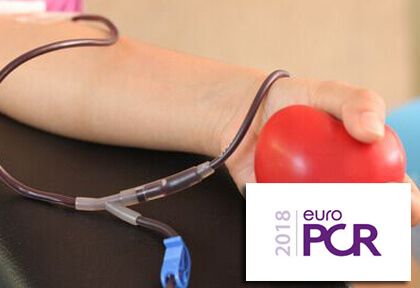The left distal radial artery has been recently proposed as an alternative in selected patients with high success rate and low complications rate. This study evaluated the feasibility and safety of this puncture both for coronary angiography and angioplasty.
 It included 200 consecutive patients with palpable left distal radial artery punctured by three expert operators. Puncture success rate was 95.5% (n=191) and required average 3,0 ± 2,8 min. Crossover rate was 4.5%. Once the inductor was in place, the angiography could be completed in all patients and the angioplasty in 98.7%.
It included 200 consecutive patients with palpable left distal radial artery punctured by three expert operators. Puncture success rate was 95.5% (n=191) and required average 3,0 ± 2,8 min. Crossover rate was 4.5%. Once the inductor was in place, the angiography could be completed in all patients and the angioplasty in 98.7%.
BARC bleeding rate was 0% and neuropathy was 1.4%.
Read also: EuroPCR 2018 | SAPIEN 3 in bicuspids.
The authors have concluded that with these data, the left distal radial approach can be recommended for a select group of patients in the hands of expert operators. The advantage of this approach is that in case of post procedure occlusion, the proximal segment will still be available for a new catheterization procedure or, eventually, for arteriovenous fistulas required by dialysis patients.
Original title: LeDRA: prospective observational study on the procedural success and complication rate of the Left Distal Radial Approach for coronary angiography and PCI.
Presenter: L. Seung-Hwan.
Get the latest scientific articles on interventional cardiologySubscribe to our weekly newsletter
We are interested in your opinion. Please, leave your comments, thoughts, questions, etc., below. They will be most welcome.





